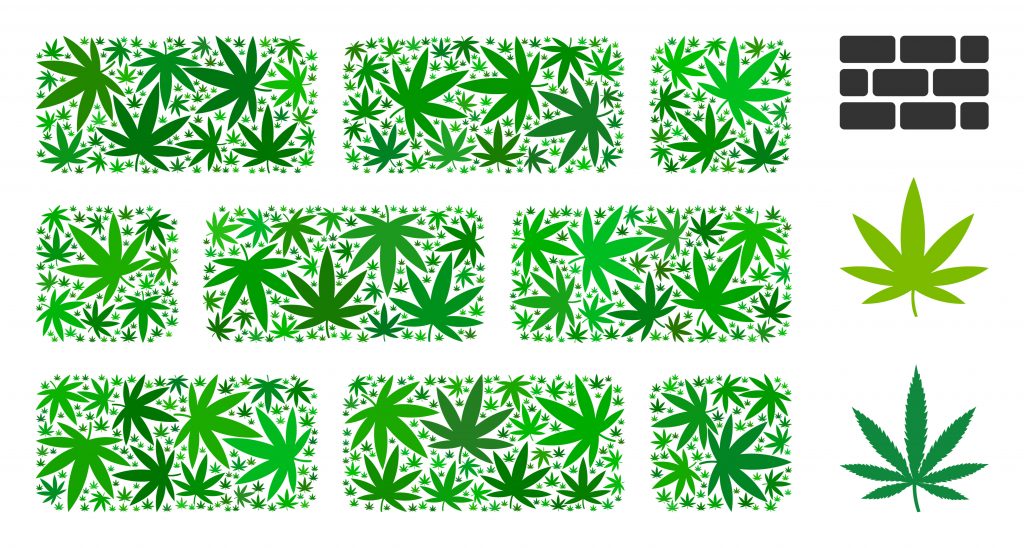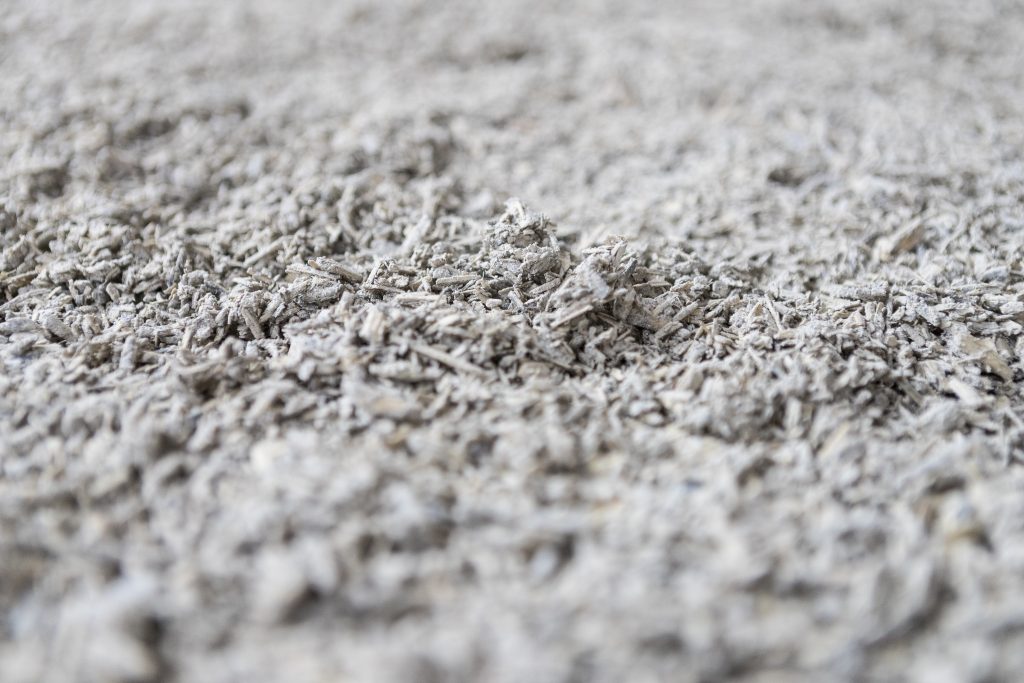Much like with hemp plastic, which has the ability to cut down on our global plastic use, replacing it with a biodegradable material which doesn’t kill the environment to make, and hemp batteries, which are still being investigated as an alternative to the standard, hempcrete is hemp’s answer to building materials, and comes with massive benefits for both industrial and private building projects. Here’s a little on what it is, and how it can help.
There are tons of hempcrete benefits for industrial building, but that’s just one great aspect of the cannabis plant. Most of us are more familiar with it for its medical and recreational benefits. Much like the appearance of hempcrete, there are also tons of new products in the medical and recreational space, like THCV, THCA, and delta-8 THC. We encourage you to use hempcrete for building projects, but if you’re looking to take the edge off after working, take a look at our deals for delta-8 THC, and many other compounds, and be glad that expanding industries means lots of new options.
Standard building: concrete, cement and CO2 emissions
The first thing you’ll notice about hempcrete is that the name of the building material sounds much like the more well-known one that has been used in the last couple centuries for mass production in building materials, concrete. Concrete, and particularly cement, production account for a huge amount of CO2 emissions, meaning the standard building industry creates a lot of greenhouse gases, and leaves a major carbon footprint on the earth. This is more related to cement, while concrete production means digging into the ground and ruining the topsoil, which is the fertile, growing layer of soil.
Concrete is a hard, chemically inert building material made from an aggregate of (generally) sand and gravel, which is bonded by cement and water. Cement for its part, is a mixture of limestone, clay, and sand which is heated in a kiln to about 1450 Celsius to produce ‘cement clinker’, which becomes standard cement after it is cooled, ground down, and mixed with other substances. 40% of the emissions related to cement production have to do with the fuels used to heat the kilns. There is also 60% created in the process of lime being heated in the kiln, which releases CO2 into the kiln, in a process called calcination. This does create a carbon footprint in the manufacture of cement and concrete. All of this accounts for an entire 8% of global CO2 emissions.
Cement only makes up approximately 7-10% of concrete, the rest is the sand, gravel, and water. The making of concrete, and cement, essentially requires use of some of the more basic raw materials found on earth. The cement industry, through it’s release of carbon dioxide, actually accounts for as much as 25% of all industry CO2 emissions. This, along with the statistic that per each dollar of revenue, it produces the most CO2 emissions. While it is cement, and not the rest of concrete production that is responsible for this, cement is an integral part of making concrete, which means cement CO2 emissions have been very hard to get around.

How widespread is use of these materials? They’re literally everywhere. Think about the majority of sidewalks, many houses, most office building, most building structures, dams, on highways, and in tons of other places. Nearly everything we come into contact with in terms of industrial building, involves the use of cement and/or concrete. With increasing issues related to the destruction of our planet, atmosphere, and breathing air, looking for building materials with less carbon footprint, becomes even more important, and this is where hempcrete comes in.
What is hempcrete?
Hempcrete sounds much like the material it’s meant to replace, concrete. Hempcrete is an alternate building material made from all-natural materials lime and hemp. Lime, of course, is a main component in cement production, with the heating of it leading to the majority of the CO2 emissions involved. In hempcrete production, the inner core of the hemp plant is used which has a woody consistency, called the ‘shiv’. It’s naturally high content of silica makes it great with binding to limestone. This is, in fact, a property unique to the hemp plant among other natural fibers.
The hurds and lime are mixed together with a sufficient amount of water. When this happens, a chemical reaction takes place with the lime and water, which creates a sort of glue which covers the hemp particles and binds them together, creating something called ‘bonded cellulose insulation’. Once everything is set and dries out, the final material is hempcrete. When substances like concrete or plaster are made, the idea is to fill the space between particles to make the substance firm and strong. This is not the case with hempcrete, where the hemp particles are only coated by the lime-binder so they can stick to each other. This means there is void space throughout the material.
Not all hemp is created equally, however, and we already know there is a massive difference between strains when it comes to medical effects. This is true of industrial effects as well. For example, some strains have more fiber. More fiber increases density and strength, which can be good at times, but which minimizes thermal abilities. When building, it’s important that builders use the correct hempcrete for their building project.
Now, when making cement, lime is heated to temperatures which cause the massive CO2 emissions. The interesting thing about hempcrete? Not only is CO2 not released in making it, but it can actually take CO2 out of the air and hold it, or sequester it. How much? According to research, as much as 19lbs of CO2 per cubic foot of hempcrete (approximately what three refrigerators release in a year). In this way, not only would hempcrete not add to CO2 emissions, it would help clear CO2 from the air. Kind of a double whammy in the helping environmental issues department.
Now, one thing to be made clear, is that hempcrete would not actually be a 100% replacement for concrete. Hempcrete doesn’t have a lot of mechanical strength, and therefore can’t be used to support large weights. Obviously this is a drawback when considering that buildings require materials that can hold a lot of weight, like concrete. On the other hand, the idea that more fibrous hempcrete creates a more firm and solid material, might indicate that a form of hempcrete might be made in the future which could do this job.

What are hempcrete benefits for industrial building?
There are plenty of hempcrete benefits when it comes to industrial and private building. Here are a few of the main ones to consider.
- The first benefit, is that it doesn’t leave a carbon footprint like cement, and works oppositely, actually helping to rid the environment of excess CO2. This is like a reverse carbon footprint.
- One of the main things hempcrete is known for, and one of the major benefits for industrial and private building projects, is its ability for insulation. This ability comes from hempcrete’s capability to stay structurally intact in humidity. Because of the porous structure (space between particles), hemp can absorb moisture directly into its cellular structure. The moisture can be stored or released based on changing weather conditions. According to a French study, one cubic meter of hempcrete can hold as much as 596kg of water. This means it can sustain up to ~ 93% humidity over a long period of time, without ruining the structure.
- Another benefit is that lime is antimicrobial, and by biding to the hemp particles, it creates surfaces on which bacteria and funguses can’t grow. Other insulation materials can more easily grow mold, hempcrete will not. Mold is a major issue in most insulation materials, making hempcrete a better solution in this vein.
- While hempcrete can’t sustain the same kind of weight as concrete, it can aid in weight support, particularly when cast around framing – conventional or double-studded. A Canadian study found that under certain circumstances, hempcrete infill along with standard wall studs, was able to increase support ability by 3-4X.
- Hemp hurd is actually a byproduct of other industrial hemp activities that rely on materials like fiber and seeds. So as industrial hemp is grown more for these aspects, there is a growing amount of hurd left over that can be used in insulation. As of right now, this material can be compressed to fuel pellets, or used in products like animal bedding, but as hurd is not used in primary industrial hemp markets, there is plenty available specifically for insulation purposes, and its use in this way helps more of the hemp plant to be used without waste.
- When creating hempcrete, there are some issues with lime being caustic, and requiring safety equipment to work with (though minor in comparison to other industrial chemicals). However, once fully dried, unlike insulators like asbestos which are now associated with massive health issues, hempcrete will release no toxins into the air around.
- The high thermal capacity of hempcrete makes it good not just for insulation, but for structuring/covering walls as well.

- Since it’s made from hemp, and contains a porous structure, hempcrete is significantly lighter than concrete, about 1/7th the weight. On the downside, this also makes it significantly weaker in terms of supporting weight, at about 1/20th that of concrete, which is why, unless a newer stronger version can be formulated, it can’t totally replace concrete.
Why aren’t we using this much better material en masse already?
This is a great question, and goes back to why hemp was illegalized in the first place, and is also relevant to the use of oil/natural gas-based plastics instead of hemp plastic. Back in the early-mid 1900’s, there were industrial chemical companies headed by families like the Duponts which didn’t want competition, and still rely on the oil industry today to make products. Oil companies are some of the biggest contributors to electoral campaigns and the sitting ducks in office who never seem to do anything useful. There was also a paper industry and a pharmaceutical industry that didn’t want competition back when prohibition was just starting.
Of course, the cement industry and concrete industries are quite large themselves, with the cement industry expected to be worth $682.3 billion by 2025. The global ready-mix concrete market size is expected to reach 1.2 trillion by 2027. Together in 2020, the cement and concrete products industries were worth $333.26 billion. The idea that those who run the corporations in these industries wouldn’t do a lot to protect against new materials that could cut into revenue, is ignoring basics of general life and industry. The size of these industries will make it hard for newer and better materials to come out, unless such corporations can themselves find ways to benefit from them.
Technically, since hempcrete is made from a plant and lime, it has the capacity to be made much more cheaply than concrete which requires digging into the earth, and much longer processing because of the cement. However, because right now there is opposition by building corporations, not that many companies operate in the hempcrete space yet, making it more expensive at the moment, even though its production is generally less expensive with all other things being equal.
Hempcrete for Industrial Building – Conclusion
There are a couple things to understand about hempcrete benefits for industrial and private building. It has a lot of positive attributes that can make buildings overall stronger and better, but its also, like with plastics, against massive industries that don’t want competition from better materials. The existent industries, however, show the extent of the value that a hempcrete market is capable of having if it can start to divert from these other industries.
Will it happen? I think so. Soon? Hard to say. As environmental problems increase, looking to materials like hempcrete becomes even more important. But the rich tend not to care about their own environment, and so the first obstacle, is gaining momentum to start cutting into these already existent, and dominating, corporations.
Hello and welcome! You’ve made it to CBDtesters.co, the #1 online spot for the most thought-provoking and up-to-date cannabis and psychedelics-related news from everywhere in the world. Check the site out regularly to stay aware of the quickly-changing universe of legal cannabis, and sign up to receive our newsletter, so you’re always in the loop.
Disclaimer: Hi, I’m a researcher and writer. I’m not a doctor, lawyer, or businessperson. All information in my articles is sourced and referenced, and all opinions stated are mine. I am not giving anyone advise, and though I am more than happy to discuss topics, should someone have a further question or concern, they should seek guidance from a relevant professional.

